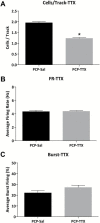Increasing endocannabinoid levels in the ventral pallidum restore aberrant dopamine neuron activity in the subchronic PCP rodent model of schizophrenia
- PMID: 25539511
- PMCID: PMC4332795
- DOI: 10.1093/ijnp/pyu035
Increasing endocannabinoid levels in the ventral pallidum restore aberrant dopamine neuron activity in the subchronic PCP rodent model of schizophrenia
Erratum in
-
Erratum.Int J Neuropsychopharmacol. 2016 Apr 27;19(10):pyw031. doi: 10.1093/ijnp/pyw031. Int J Neuropsychopharmacol. 2016. PMID: 27207904 Free PMC article. No abstract available.
Abstract
Background: Schizophrenia is a debilitating disorder that affects 1% of the US population. While the exogenous administration of cannabinoids such as tetrahydrocannabinol is reported to exacerbate psychosis in schizophrenia patients, augmenting the levels of endogenous cannabinoids has gained attention as a possible alternative therapy to schizophrenia due to clinical and preclinical observations. Thus, patients with schizophrenia demonstrate an inverse relationship between psychotic symptoms and levels of the endocannabinoid anandamide. In addition, increasing endocannabinoid levels (by blockade of enzymatic degradation) has been reported to attenuate social withdrawal in a preclinical model of schizophrenia. Here we examine the effects of increasing endogenous cannabinoids on dopamine neuron activity in the sub-chronic phencyclidine (PCP) model. Aberrant dopamine system function is thought to underlie the positive symptoms of schizophrenia.
Methods: Using in vivo extracellular recordings in chloral hydrate-anesthetized rats, we now demonstrate an increase in dopamine neuron population activity in PCP-treated rats.
Results: Interestingly, endocannabinoid upregulation, induced by URB-597, was able to normalize this aberrant dopamine neuron activity. Furthermore, we provide evidence that the ventral pallidum is the site where URB-597 acts to restore ventral tegmental area activity.
Conclusions: Taken together, we provide preclinical evidence that augmenting endogenous cannabinoids may be an effective therapy for schizophrenia, acting in part to restore ventral pallidal activity.
Keywords: cannabinoids; hippocampus; phencyclidine; schizophrenia; ventral pallidum.
© The Author 2014. Published by Oxford University Press on behalf of CINP.
Figures







References
-
- American Psychiatric Association (2000). Diagnostic and statistical manual of mental disorders, fourth edition, text revision (DSM-IV-TR). Washington, DC: Author.
-
- Ames F. (1958). A clinical and metabolic study of acute intoxication with Cannabis sativa and its role in the model psychoses. Br J Psychiatry 104:972–999. - PubMed
-
- Arseneault L, Cannon M, Witton J, Murray RM. (2004). Causal association between cannabis and psychosis: examination of the evidence. Brit J Psychiatry 184:110–117. - PubMed
-
- Barnes TR, Mutsatsa SH, Hutton SB, Watt HC, Joyce EM. (2006). Comorbid substance use and age at onset of schizophrenia. Br J Psychiatry 188:237–242. - PubMed
Publication types
MeSH terms
Substances
Grants and funding
LinkOut - more resources
Full Text Sources
Other Literature Sources
Medical

